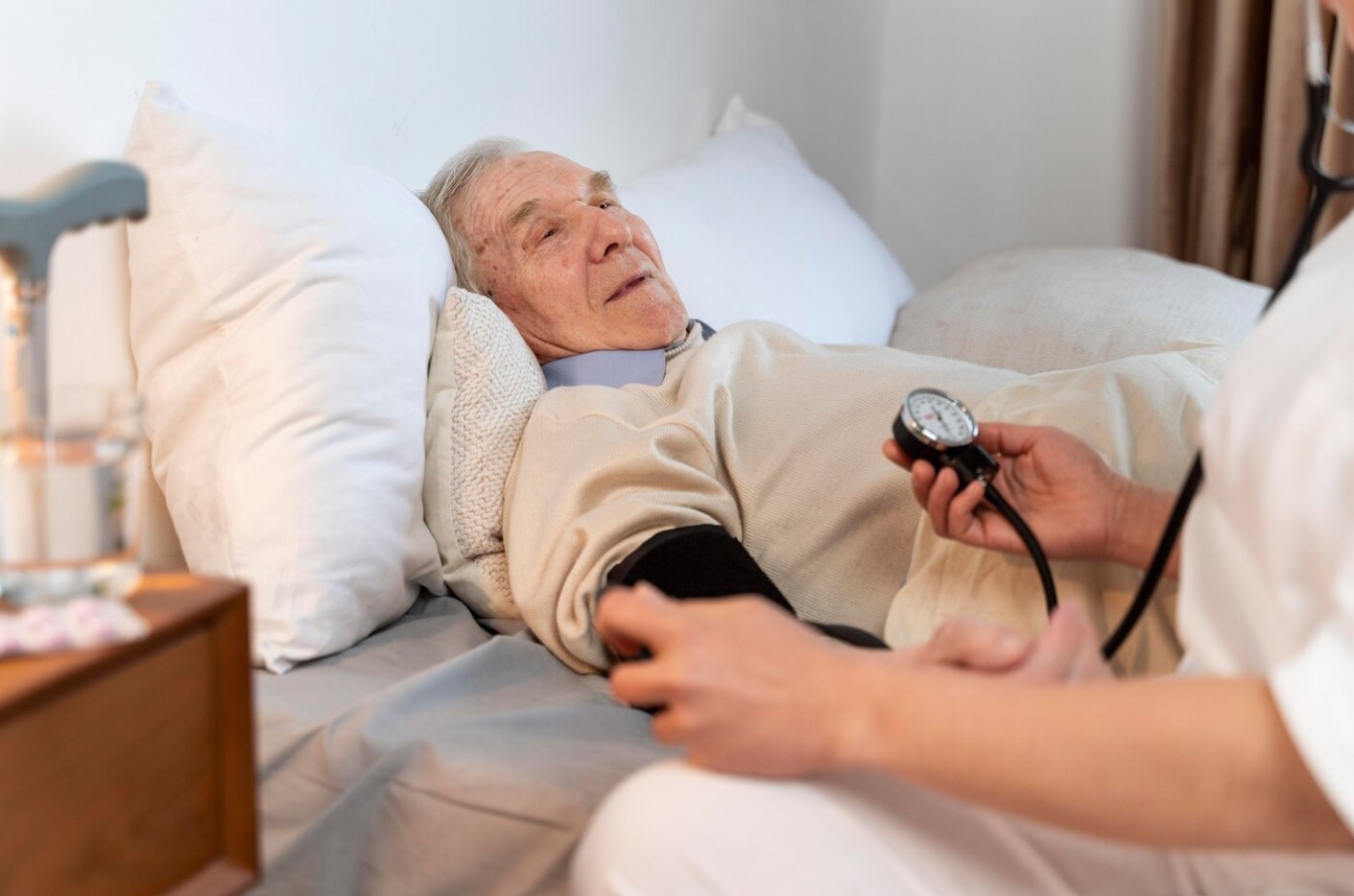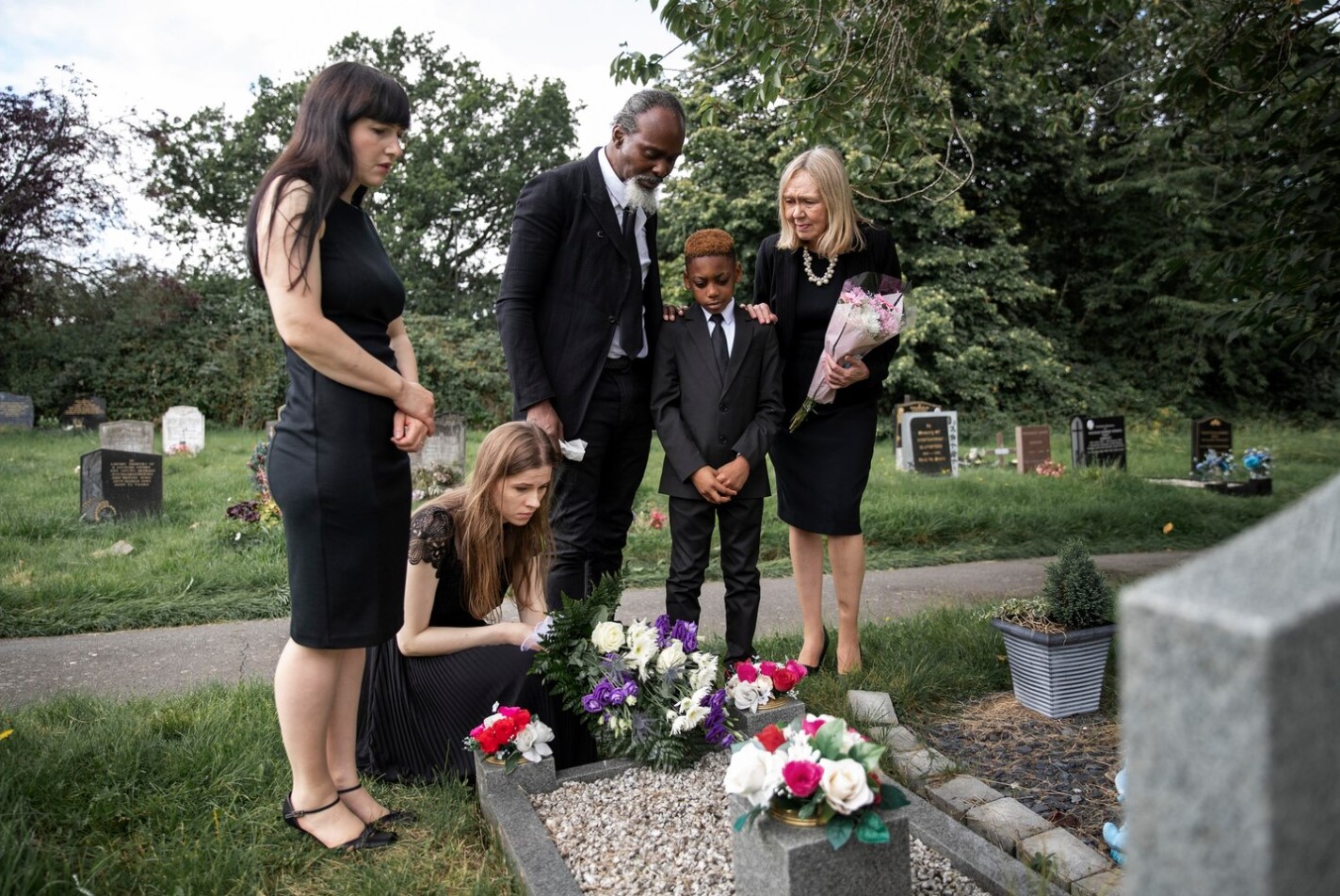
Empowering Careworkers: The Hospice Walk for Honoring and Supporting Hospice Patients
Nov 12, 2023In the field of Aging and Geriatrics, careworkers play a vital role in providing compassionate support and care to hospice patients and their families. Understanding the natural dying process is crucial for delivering effective care and ensuring the well-being of patients in their final stages of life. In this comprehensive blog, we will guide you step by step through the important aspects of how The Hospice Walk supports and honors hospice patients. By addressing frequently asked questions, practical knowledge, confusion and terminal restlessness, the shutting down process, and important issues after the final death, you will gain invaluable insights to enhance your skills as a careworker. Let's embark on this journey together.
Section 1: Frequently Asked Questions from Patients and Family Members

When facing the natural dying process, patients and their families are often filled with uncertainties and anxieties. As a careworker, your ability to address their questions and concerns plays a crucial role in providing reassurance and comfort. In this section, we will delve into some of the most frequently asked questions, equipping you with the knowledge and understanding to respond effectively and compassionately.
What is the natural dying process?
Understanding the natural dying process is essential for both patients and their families. Explaining the physical and emotional changes that occur during this stage can help alleviate fears and create a sense of acceptance. By providing a clear and empathetic explanation, you can guide them through the journey with greater understanding.
How can we manage pain and discomfort during the dying process?
Pain management is a critical aspect of hospice care. Patients and their families often worry about how pain will be addressed and controlled. By discussing the various options available, such as medications, alternative therapies, and comfort measures, you can alleviate their concerns and ensure the highest level of comfort for the patient.
- What can we do to create a comfortable and peaceful environment for our loved ones?
Creating a soothing environment is vital in promoting a sense of tranquility and serenity for the patient. Families may have questions about the physical surroundings, such as lighting, temperature, and noise levels, as well as emotional considerations, such as playing calming music or displaying cherished mementos. By providing guidance on creating a comfortable space, you can enhance the overall well-being of the patient.
- How can we support our loved one emotionally during the dying process?
Emotional support is essential for both the patient and their family members. They may have concerns about how to offer comfort, maintain open communication, and cope with their own emotions. By offering guidance on active listening, validation of feelings, and providing opportunities for meaningful conversations, you can assist families in fostering emotional connection and creating lasting memories.
- What are some signs that death is near?
Recognizing the signs that death is approaching can help prepare families for the final stages. They may have questions about specific physical and behavioral changes, such as decreased appetite, increased sleepiness, or withdrawal. By discussing these signs in a compassionate and informative manner, you can help families navigate this sensitive time with a greater sense of awareness and understanding.
- How can we involve other family members and friends in the dying process?
Involving loved ones in the dying process can provide support and strengthen relationships. Families may seek guidance on how to include children, extended family members, or close friends in meaningful ways. By suggesting activities such as storytelling, creating memory books, or organizing small gatherings, you can help families foster a supportive network and encourage shared moments of connection.
- What resources are available for bereavement support after the death of a loved one?
Grieving is a natural and individual process, and families may need assistance in finding appropriate support resources. By sharing information about grief counseling, support groups, and community organizations, you can help families access the assistance they need to navigate their grief journey and find solace in shared experiences.
By addressing these frequently asked questions with compassion and expertise, you will empower patients and their families to navigate the natural dying process with a greater sense of understanding and peace. Through effective communication and support, you can make a profound difference in their journey and provide the comfort they need during this challenging time.
Section 2: Practical Things Every Family Member Should Know

When a loved one is under hospice care, family members become essential partners in providing support and comfort. It is crucial to equip them with practical knowledge and resources to ensure a smooth caregiving journey. In this section, we will explore practical aspects that every family member should be aware of, offering actionable tips and guidance to empower them in their role.
- Pain Management: Understand prescribed medications and communicate any changes to the care team.
- Personal Care: Learn proper techniques for bathing, dressing, and toileting to ensure privacy, dignity, and safety.
- Comfortable Environment: Create a soothing space with familiar items, appropriate lighting, and a suitable temperature.
- Nutrition and Hydration: Offer small, frequent meals and favorite foods while considering dietary restrictions and encouraging regular hydration.
- Medication and Treatment: Organize medications, set reminders, and report concerns to the care team promptly.
- Effective Communication: Maintain regular contact with the care team, actively listen, take notes, and seek clarification when needed.
- Self-Care: Prioritize rest, seek support from others, and consider respite care services. Access counseling or support groups for personal well-being.
By following these practical tips, family members can provide optimal care, comfort, and support for their loved ones during their time in hospice care.
Section 3: Understanding Confusion and Terminal Restlessness

Confusion and terminal restlessness are distressing symptoms experienced by hospice patients. Knowing the causes, symptoms, and interventions is vital for careworkers. Here are key points to recognize and address these challenges effectively:
- Causes: Physiological changes, medications, metabolic imbalances, and emotional distress contribute to confusion and restlessness.
- Symptoms: Look for disorientation, agitation, hallucinations, restlessness, increased vocalization, and sleep disturbances.
- Communication: Maintain a calm presence, use simple language, avoid arguments, and offer comforting gestures.
- Non-pharmacological interventions: Create a peaceful environment, establish routines, minimize stimulation, and provide sensory experiences.
- Medication interventions: Collaborate with the hospice team to determine appropriate medications, considering underlying causes and side effects.
- Emotional support: Educate and reassure family members, promote open communication, and provide guidance on self-care and stress management.
- Documentation and collaboration: Accurate documentation and interdisciplinary collaboration ensure comprehensive care.
By applying these insights, you can provide compassionate care, alleviate distress, and enhance the comfort of hospice patients and their families.
Section 4: The Shutting Down Process of the Natural Dying Process

The process of actively dying is a crucial phase in a patient's end-of-life journey. In this section, we will examine the signs and symptoms that indicate a patient is actively dying. By understanding these indicators, careworkers can provide appropriate care and support during this critical time, ensuring the patient's comfort and preserving their dignity.
- Physiological Changes: Patients in the active dying process may experience significant physiological changes. These can include irregular breathing patterns, changes in blood pressure and heart rate, cooling of the extremities, and decreased responsiveness. Recognizing these physical changes helps careworkers to adjust care accordingly, ensuring comfort measures such as repositioning, pain management, and maintaining optimal hydration.
- Emotional and Psychological Needs: Patients who are actively dying may experience a range of emotional and psychological needs. They may express fear, anxiety, or a desire for emotional connection. Providing a compassionate presence, active listening, and validation of their feelings can help alleviate distress and provide comfort during this sensitive time.
- Family Support: Actively dying patients often benefit from the presence and support of their loved ones. Facilitating opportunities for family members to say their goodbyes, share memories, and express their love can bring comfort and closure to both the patient and their family. Ensuring a peaceful and private environment for these interactions is essential.
- Spiritual and Cultural Considerations: Recognizing and honoring the spiritual and cultural beliefs of actively dying patients is crucial. Some may find solace in religious rituals, prayers, or cultural practices. Respecting and accommodating these aspects can provide comfort and support during this transitional phase.
By understanding the process of actively dying, care workers can provide holistic care that attends to the physical, emotional, and spiritual needs of patients. Your knowledge and sensitivity during this time will help ensure the patient's comfort, dignity, and the opportunity for meaningful connections with their loved ones.
Section 5: Important Issues After the Final Death

After the final death of a hospice patient, there are significant matters that demand sensitivity and attention. This section focuses on the practical, emotional, and legal aspects that careworkers should be aware of. By understanding and addressing these issues, you will be equipped to support grieving families and navigate the necessary procedures with compassion and expertise.
- Grief Support: Supporting grieving families is paramount after the death of a loved one. Offer empathetic and compassionate care, providing resources for bereavement counseling, support groups, and memorial services. Understanding the unique dynamics of grief and providing a safe space for expression fosters healing and assists families in their journey of mourning.
- Emotional Care: Attend to the emotional well-being of family members, offering a listening ear and validating their feelings. Provide information on coping strategies and self-care during the grieving process. By acknowledging their emotions and offering support, you can help them navigate this challenging time.
- Practical Matters: Assist families in handling practical matters such as obtaining death certificates, notifying relevant authorities, and arranging for funeral or memorial services. Guide them through the necessary paperwork and procedures, ensuring they have the information and support needed during this administrative process.
- Legal Considerations: Familiarize yourself with legal aspects surrounding end-of-life care, including wills, estates, and advance directives. Offer guidance on accessing legal resources and connecting families with professionals who can provide assistance with these matters. Understanding the legal framework allows you to empower families in addressing their loved one's final affairs.
By addressing these important post-death issues, care workers can support families in navigating the practical, emotional, and legal aspects of their grieving process. Your knowledge, empathy, and guidance will provide comfort and assistance during this challenging period, allowing families to focus on healing and honoring their loved one's memory.
Conclusion:
In conclusion, understanding and effectively supporting hospice patients during their end-of-life journey is a vital aspect of providing compassionate care. Throughout this blog, we have explored key topics related to the natural dying process, including frequently asked questions, practical knowledge for families, confusion and terminal restlessness, the shutting down process, the process of actively dying, and important post-death issues. By incorporating this knowledge into your caregiving practice, you can make a profound difference in the lives of hospice patients and their families.
However, there is much more to learn and explore. To expand your expertise in hospice care, we recommend enrolling in the CEU Outlet Course "The Hospice Walk." This continuing education course is designed for therapists, care workers, health practitioners, nurses, and professionals in the field. By joining the course, you will gain comprehensive knowledge and practical skills to provide exceptional support to hospice patients and their families.
By taking this step towards professional development, you can make a significant impact on the lives of those in hospice care. Don't miss the opportunity to enhance your skills and join a supportive community of professionals. Enroll in "The Hospice Walk" at CEU Outlet and embark on a journey of continued learning and compassionate care.




